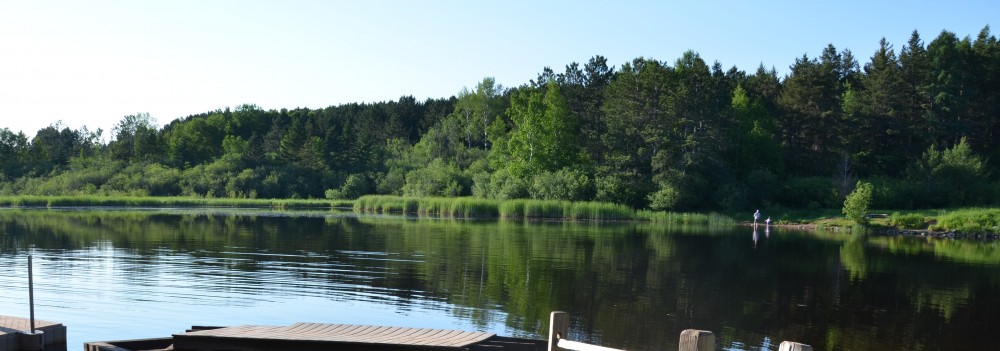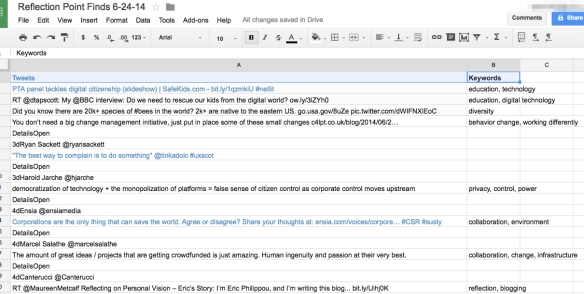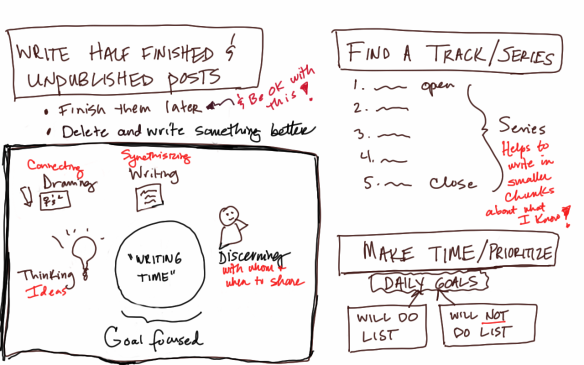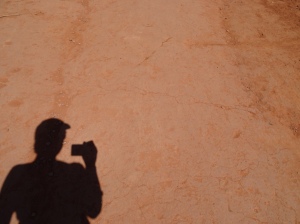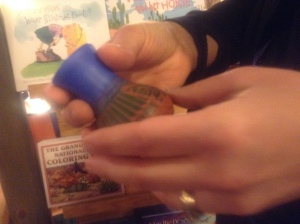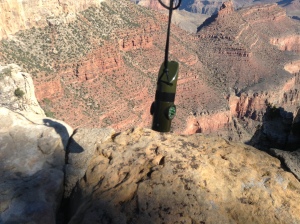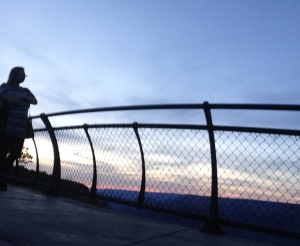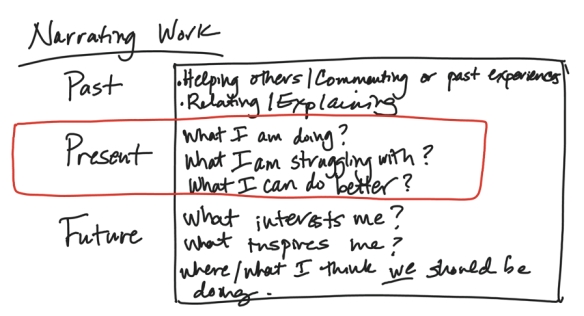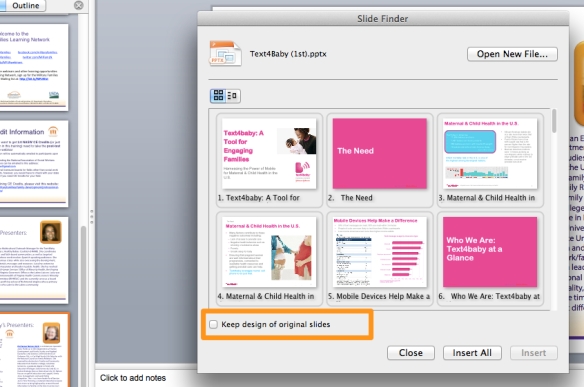In the midst of coaching others to use social media to reach and connect with specific audiences to share research-based information, I’ve probably re-tweeted and researched more about articles concerning social change, organizational management, innovation, and behavior change than any other topic. Why? I asked myself. What business do I have trying to tweet things about changing the organization and the habits of people I work with?
To answer this question, I copied and pasted my tweets that I have favorited into a spreadsheet (an activity I’m repeating/tweaking from my first reflection point blog post), then added a column to label each tweet with keywords that described why I had favorited those tweets.
I then took the spaces out of the words, and placed the list in Word it Out, which enabled me to see relationships between words based on their frequency of use.
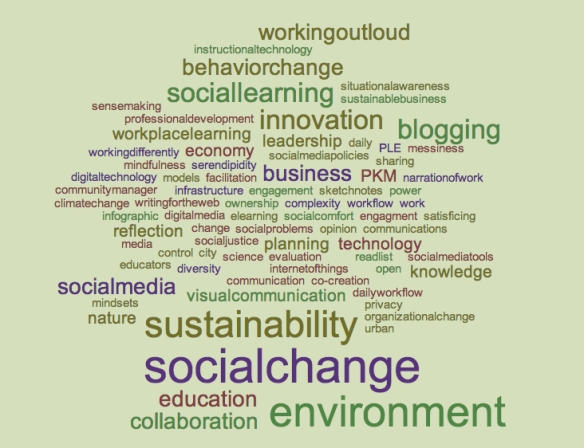 What does the wordcloud tell me? What topics am I interested in and why? How does what I’m interested in tie to my understanding of my work and personal ambitions better?
What does the wordcloud tell me? What topics am I interested in and why? How does what I’m interested in tie to my understanding of my work and personal ambitions better?
1)Biggest sized words -Social change, environment, and sustainability.
I see technological shifts creating flux and the same time I see our natural environmental becoming stressed and less predicable. Both of these trends disrupt stability and sustainability. Instead of thinking of stability and sustainability, I see we need to look at ways we can be more agile and resilient.
This will take new technical know-how, mindsets, and ways of working through social networks, more specifically by:
a) finding, knowing, and being connected to people (this 30 second ad on collaboration and social networking illustrates this point well).
b) strategically aligning or collaborating with people and partners around common needs and priorities. (I especially found the April 2014 issue of Harvard Business Review How to Thrive in a Warmer World insightful – especially the article of how UPS incorporated their sustainability efforts into their business and how they addressed priorities, and determined partnerships, etc..)
2)Medium sized words –blogging, social learning, behavior change, working outloud, PKM, planning, knowledge, social media, reflection, technology, planning, workplace learning, visual communication
In helping educational professionals change their habits to incorporate social media use into their daily work routines, I thought I should challenge myself to adopt new habits, also.
Since I’ve been using social media to keep up-to-date with new trends since 2008, I didn’t anticipate how much I needed to slow down and spend more time reflecting upon or synthesizing what I am learning, how I’ve come to know it, and how to say and share (when and where) with others to provide value for me, or them.
This realization fully came to me through participation in Harold Jarche’s PKM Workshop, and is a real lens for personal, organizational, and social change. I’m learning of few existing organizations that are setup to support or encourage this kind of networked learning and reflective practice, which may initially conflict (or appear to conflict) with getting current task-type work done.
3)Smaller words – I see a couple ways to make sense out of the smaller words: words that are “related to my work”, and “trends to watch of learn from”.
Related to Work: community manager, digital technology, facilitation, situational awareness, diversity, educators, digital media, writing for the web, infrastructure, messiness, workflow, complexity, communication, social media tools, professional development, sharing, social media policies, saticficing, social comfort.
My work is very much about making order out of change, and helping others (often many parties) navigate new tools and approaches for working and communicating together. Seeing how others work in similar contexts is helpful for validating or communicating ideas that might seem “out there” at first.
Trends to watch or learn from: internet of things, diversity, serendipity, climate change, privacy, mindsets, nature, economy.
In helping others to use social media to learn, collaborate, and share research-based information and solutions with others, I think it’s important to see and question both the possibilities and the limitations of how technological and other disruptive shifts are occurring and how they will affect people, communities, and business.
In summary, I see social media becomes a lens for change in these ways:
Social media and networking is a way to keep up-to-date and understand how social, technology, and environmental climates are shifting.
Social media provides possible tools, methods, and collaborative opportunities needed for trying to ride waves of disruption caused by shifting climates (social and environmental).
Without organizational support, I see shifting personal habits to spend more time reflecting, learning, and interacting via social media and networks within the context of professional work may be difficult for many.
Social media and our social networks can help those of us who work with hard-to-explain ideas, concepts, or ‘things for which we have no name” to validate, refine, and communicate our once fuzzy ideas into something more tangible or effective.
While teaching others to use social media often starts by helping others define their social media/communication strategies, I see the real value in helping people use social media is to develop (i.e. change or enhance) support networks and methods to help ride and detect future and existing waves of change.
It’s helpful to reflect on the reasons I keep tweeting and reading about social change. To me, making the most of of social media means learning new things all the time, which requires behavior change at many levels (personal, organizational, network).
